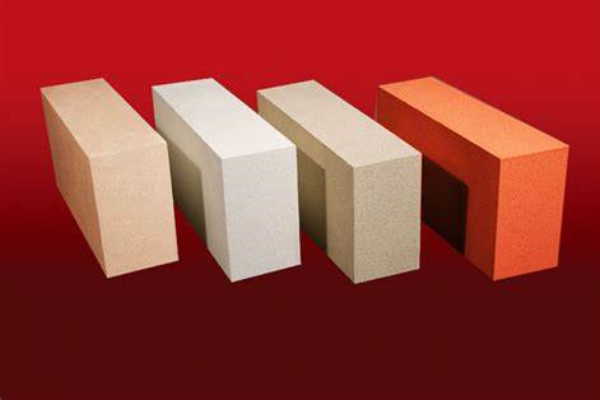
Терптерная тепловой тепловой тепловой тепловой тепловой.
Огнеупорный теплоизоляционный кирпич может сделать работу печи более энергоэффективной и экологичной., и играют роль в экономии топлива при уменьшении потерь тепла.
Рефрактерные теплоизоляционные кирпичи широко используются в различных высокотемпературных приложениях, в том числе порошковые металлургические поясные машины для аппарата, термообработка печи, Алюминиевые электролизы резервуаров, керамика, огнеупорные материалы, строительные материалы, стреляющие в печи, разнообразные электрические печи нефтерохимической промышленности и так далее.
В настоящий момент, Есть кремнистые легкие изоляционные материалы, глина, высокий глинозем, и корунд, применимо к различным промышленным печи, В соответствии с различными требованиями рабочей среды и уровня температуры печи, выбор различных типов и толщин материала, Не только для высокотемпературной изоляции печи, но и для подкладки прямого контакта с пламенем.
Терптерная тепловой тепловой тепловой тепловой тепловой. При низких температурах, в основном твердофазная теплопередача. При высоких температурах, Газофазный теплопередача важна.
Чтобы уменьшить теплопередачу в твердой фазе, необходимо выбрать твердую фазу с низкой теплопроводности, и также необходимо уменьшить площадь контакта между твердыми частицами.
Например, Чем сложнее кристаллическая структура, Чем больше фононов разбросано, а чем ниже теплопроводность. Поликристаллы имеют худшую структурную целостность и регулярность, плюс влияние примесей границ зерна и искажений, и имеют более низкую теплопроводность, чем монокристаллы. Снова, Поры могут разбросить фононы. Рефрактерные кирпичные фабрики сказал это: в общем, Пористость увеличивается, который может снизить теплопроводность. Также, Использование сферических микрочастиц, так что тепло может передаваться только через крошечную площадь контакта между частицами, может значительно снизить теплопроводность твердого тела.
(1) метод формования в пустых сферах: Метод в основном через связующую, а затем путем сушки и стрельбы при соответствующей температуре для получения продуктов. Продукты, произведенные этим методом, недорогие и простые, но они склонны к расслоению в процессе формирования, и из -за разницы в термическом расширении между связующим и заполнителем, Они склонны к растрескиванию или даже разрушению в процессе повторного нагрева и охлаждения.
(2) Метод сгоревшего наполнителя: Этот метод процесса прост, бюджетный, и является основным методом производства пористого легкого сохранения тепла и теплоизоляционных материалов. Обычно используемые горючие добавки являются опилки, пробковой порошок, уголь, антрацит пепел, кока -порошок, рисовая шелуха, частицы полистирола, частицы нафталины, и так далее.
(3) Метод пенообразования химической реакции: Этот метод представляет собой использование порово-формируемого агента, смешанного в суспензию, и жидкие фазы компонентов для получения химической реакции для высвобождения газа, так что суспензию становится пористым поток, Поливая литья, сушка, и получить пористую заготовку, а затем высокотемпературный кальцинирование, которая производится. Этот метод подходит для изготовления чистой оксидной теплоизоляции., Пористость до 55% -75%.
(4) Предварительно врученное летучие вещества метод репеллента: Этот метод представляет собой летучие вещество, смешанное с суспензией, а затем при определенных условиях, чтобы сделать сублимацию летучих веществ с образованием воздушных отверстий.
(5) Пена предварительно смешанный метод формования литья: Этот метод добавляется в пену для суспензии (Получен белком, Розовое мыло, Смола Сапона, и другие физические пенообразования пены) Смешано, чтобы получить пенопластовую суспензию, а затем лить, После сушки и стрельбы, чтобы получить пористые легкие теплоизолирующие рефрактерные материалы.
В настоящий момент, Фактическое производство часто используемых методов-это метод сгоревшего наполнителя и предварительно предварительно переносимый метод литья. Прочность и теплопроводность легких теплоизолирующих кирпичей, изготовленных с различными методами производства, сильно различаются.
Здесь представлено контент из рефрактерной теплоизоляции кирпича, Я надеюсь помочь вам, Если есть и другие вопросы, Добро пожаловать, чтобы позвонить, чтобы проконсультироваться. За рефрактерный как профессиональный производитель рефрактерных технологий, с хорошим качеством, и низкие цены. За рефрактерный с использованием автоматизированных производственных процессов и оборудования, Внедрение системы передового управления и качества, Для обеспечения того, чтобы каждая партия рефрактерных могла соответствовать требованиям пользователя, И это качество продукта заслуживает вашего доверия. Качество продукции заслуживает вашего доверия.
С октября, Цены на глинозем продолжают расти, and China's largest bauxite importer - a…
Первый, Высокоглиноземистый кирпич: The Leader In High Temperature Refractories As a leader in high-temperature…
The application of refractory bricks in the kiln immediately endangers the operation rate of the…
Analysis Of The Causes Of Common Quality Problems In Tunnel Kiln Construction And Measures To…
Corundum quality refractory castables are made from corundum to the new jade refractory insulation material…
Анализ алюминиево-кремниевого огнеупорного сырья проф.. Li Yong of the University of Science and…